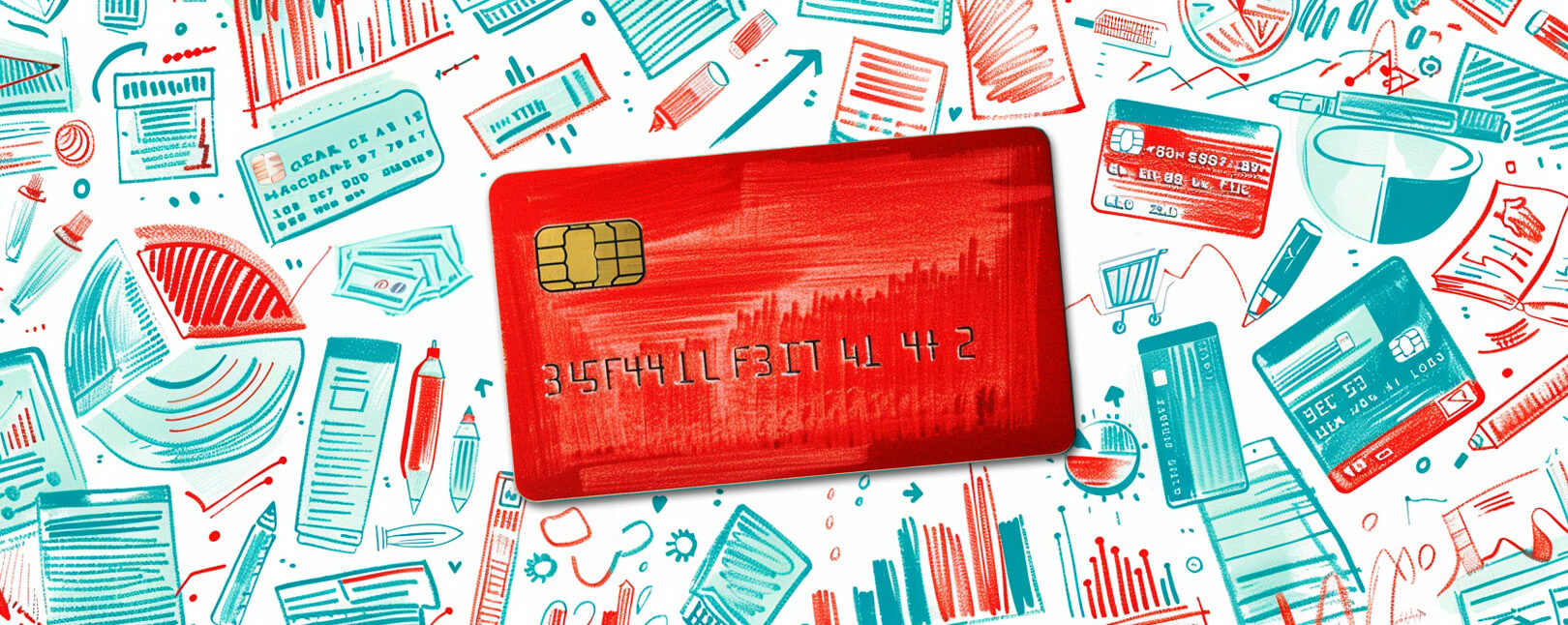The Top 15 Ad Fraud Threats to Know in 2024 & How to Stop Them
Wherever you find merchants making money, it’s a sure bet you’ll find fraudsters, too. Case in point: online advertising.
More and more merchants are reaping the benefits of digital marketing. Not surprisingly, cybercriminals have devised ways to hijack online ads and make money at merchants’ expense.
The numbers are huge: according to recent estimates, US merchants lost $23 billion to ad fraud last year. Fraudsters are cashing in, while advertisers often can’t figure out what’s going wrong. That raises the question: what can you do about it?
Recommended reading
- Address Fraud: How Criminals Swap Addresses to Abuse Victims
- How do Banks Conduct Credit Card Fraud Investigations?
- What is Wardrobing? How Can Retailers Stop Refund Abuse?
- Key Credit Card Fraud Statistics to Know for 2024
- Scammers See Opportunity as March Madness Begins
- Man-in-the-Middle Attacks: 10 Tips to Prevent These Scams
What is Ad Fraud?
- Ad Fraud
Digital ad fraud refers to any attempt to fraudulently siphon revenue from businesses through online advertising. Click fraud, domain spoofing, and cookie stuffing are all examples of ad fraud.
[noun]/əd • frôd/Fraudsters typically use bots, or autonomous web programs that hackers design to conduct malicious activity, to commit ad fraud. Some industry specialists speculate that nearly half of all web traffic is generated by bots, and a good chunk of that activity may be malicious in nature.
Some of these bots can be sophisticated enough to deceive individual users, publishers, and even global platforms like Google. That’s what makes this widespread, often hard-to-detect threat both deeply frustrating and alarmingly commonplace.
Ad fraudsters make money by exploiting the financial mechanisms behind digital advertising. Advertisers pay for impressions, clicks, or conversions, while fraudsters aim to artificially inflate these metrics. The advertiser ends up paying for non-existent or worthless interactions as a result.
Ad fraud attacks have a dual impact: they drain companies' advertising budgets while also skewing analytical data. This makes it hard for advertisers to determine the success of any given campaign.
Top 15 Most Common Ad Fraud Tactics
For many advertisers, the fight against ad fraud has climbed to the top of their agenda. They need to prioritize monitoring and counteract these deceptive practices to ensure their advertising budget is used effectively to reach genuine customers. Beyond the direct financial impact, combating ad fraud is also critical for stopping security risks, and protecting brand reputation.
Fraudsters are sophisticated, and develop new tricks every day. That said, most online advertising scams make use of one of the following tactics:
These examples demonstrate the constantly evolving and complex nature of ad fraud. But how do you spot an attack before it’s too late? Let’s take a look.
How Does Ad Fraud Impact Advertisers?
Ad fraud isn't a minor inconvenience; it's a multi-billion dollar problem that has far-reaching consequences for advertisers. Beyond the immediate financial setbacks, the ripple effects can distort market analytics, tarnish brand reputation, and even expose businesses to legal risks.
Ad fraud can lead to:
As you can see, ad fraud is not a problem to be taken lightly. It's a formidable obstacle that can cripple even the most well-planned advertising strategies. Acknowledging the myriad ways it can affect your operations, you are better positioned to implement strong defenses and mitigate these damaging impacts.
Common Warning Signs of Ad Fraud
Since ad fraud comes in all shapes and sizes, no single tactic will be enough to protect publishers or advertisers. That said, a multi-level ad fraud detection plan can help alert you about fraud when it happens, allowing you to take defensive action.
Google Analytics and other such services can help monitor activity. However, even DIY tactics can detect and deter some types of ad fraud. Mostly, it requires basic analysis and common sense.
The following are a few of the key warning signs of ad fraud activity that you should watch for:
#1 | Performance
If you’re looking for ad fraud, a lack of performance conversions (increased sales, for example) is a dead giveaway. An easy way to check is by comparing the performance of your display ad campaigns to other channels like Facebook, LinkedIn, or other well-known sites.
If 100 clicks from a Twitter ad result in 10 conversions, but your display advertising campaigns deliver zero, that should set off alarm bells. By the same token, something is still amiss if your display ads are bringing in 50 conversions compared to 5 via Twitter.
#2 | Functionality
Take note of anything that seems out of the ordinary, like spikes in traffic that happen for no known reason. Certain fraud tools use historical data and statistical analysis to identify questionable events. But, even with these kinds of safeguards, you should stay alert for anomalies.
Some bots can be programmed to mimic human behavior, but most will not be that sophisticated. Look for tell-tale signs of real human behavior, such as visiting other pages on the site, filling out forms, and so on. Compare the results and look for any events that break the pattern.
#3 | Unrealistic CTRs
Perhaps the most obvious red flag is an unrealistically high click-through rate (CTR). It can be easy to ignore this warning sign simply because you want it to be true. However, if you're experiencing CTRs 0.5%, you’ll probably need to check into things further.
This is especially true if you’re only getting those numbers from certain sites. Check your analytics for things like high bounce rates and short session durations.
#4 | Unusual Traffic Spikes
When you experience sudden, unexplained bursts in website traffic or clicks, this could be a strong indicator of fraudulent activity. Automated bots programmed to simulate user behaviors can flood your site or ads with visits to rack up the numbers. These spikes are often inconsistent with your typical patterns of user engagement and usually don't lead to conversions.
#5 | Low Engagement Rates
A high number of clicks coupled with unusually low levels of user engagement. Normally, legitimate traffic comes with a certain level of interaction, whether it's time spent on the site, scrolling through content, or completing desired actions like filling out forms. If you notice engagement metrics like average session duration or pages per session are down, despite a surge in clicks, you could be looking at fraudulent activity.
#6 | High Bounce Rates
A bounce rate is the percentage of visitors who navigate away from the site after viewing only one page. While bounces are normal, an unusually high bounce rate, coupled with high click rates, could indicate click fraud. Bots programmed for this purpose click on an ad and then leave immediately, failing to interact with the page.
#7 | Suspicious Geographic Location
Your analytics tools show that a large percentage of your traffic is coming from countries or regions where you do not operate or are not targeting your ads. Fraudsters often use techniques like geomasking or IP spoofing to disguise the true origin of traffic, making it appear as if it's coming from a more valuable geographic location.
#8 | Odd Hours of Activity
Legitimate user activity usually aligns with certain expected patterns, often tied to time zones or typical waking hours. Do you see an unusual amount of clicks or activity happening at odd hours when your target audience should be asleep or otherwise inactive? This could be indicative of automated bot activity.
#9 | Mismatched User-Agent Strings
User-agent strings provide details about a visitor's browser and operating system. Anomalies can be a strong indicator of fraud, such as a mismatch between the device type indicated in the user-agent string and the kind of device where the ad was supposed to be shown. For instance, if your campaign is aimed at desktop users, but the user-agent string suggests mobile browsers.
#10 | Short-lived User Accounts
In models where advertisers pay for specific conversions, like account sign-ups, a sudden surge of new accounts that are created and abandoned almost immediately can be a sign of fraud. Click scammers use these fake accounts to perform specific actions that trigger commissions or bonuses, only to discard the accounts once they've received the payout.
Recognizing these red flags can enable advertisers to act swiftly and minimize the impact of ad fraud. If you pick up on these, and suspect ad fraud as a result, you should contact the publisher or your ad network immediately.
Our Top 10 Tips to Prevent Ad Fraud
As we mentioned earlier, ad fraud comes in so many variations that a “one-size-fits-all” solution isn’t feasible. Attacking the problem from multiple angles is the only way to effectively mitigate risk. Here are a few suggestions for creating an effective prevention plan:
Preventing and detecting these types of fraud requires a combination of automated detection tools and manual oversight to safeguard the interests of both publishers and advertisers.
Ad Fraud: an Ongoing Issue
Ad fraud is a constant push-pull between advertisers (and publishers) and cybercrooks. Fraudsters are getting more sophisticated, so it’s hard to know exactly how widespread the problem is.
On the other hand, awareness on the part of advertisers is higher, and technology detecting ad fraud keeps improving. Blockchain offers tantalizing possibilities, as do advances in machine learning.
The issue is far from resolved, but there is hope for the future. In the meantime, though, being proactive about ad fraud threat sources is the only way to protect yourself (and your ad budget).
FAQs
What is ad fraud and how does it work?
Digital ad fraud refers to any attempt to fraudulently siphon revenue from businesses through online advertising. Click fraud, domain spoofing, and cookie stuffing are all examples of ad fraud.
Fraudsters typically use bots to commit ad fraud. These are autonomous web programs that hackers design to conduct malicious activity, and they are abundant.
What is an example of ad fraud?
In one common example of click fraud, cybercriminals use bots to repeatedly click on an advertiser's pay-per-click ads, falsely inflating engagement metrics. The advertiser pays for these fake clicks, depleting their budget without gaining any real customer engagement. As a result, the scammer pockets the unearned commissions at the advertiser's expense.
Is ad fraud legal?
Ad fraud is illegal as it involves deception and theft from advertisers by falsifying engagement metrics and activities. Those engaged in ad fraud can face legal repercussions, including fines and imprisonment. Despite its illegality, ad fraud remains a persistent challenge in the digital advertising industry.
How does ad fraud make money?
Ad fraudsters make money by exploiting the financial mechanisms behind digital advertising. Advertisers pay for impressions, clicks, or conversions, but fraudsters use deceptive tactics to artificially inflate these metrics.
How does ad fraud occur?
Generally speaking, ad fraudsters exploit various elements of the advertising ecosystem to cheat advertisers and, sometimes, publishers out of money. They typically use sophisticated tactics, including but not limited to automated bots, fake websites, and data manipulation, to falsely inflate traffic, clicks, or engagement metrics.
Is ad fraud a problem?
Yes. According to recent estimates, US merchants lost $23 billion to ad fraud last year.














